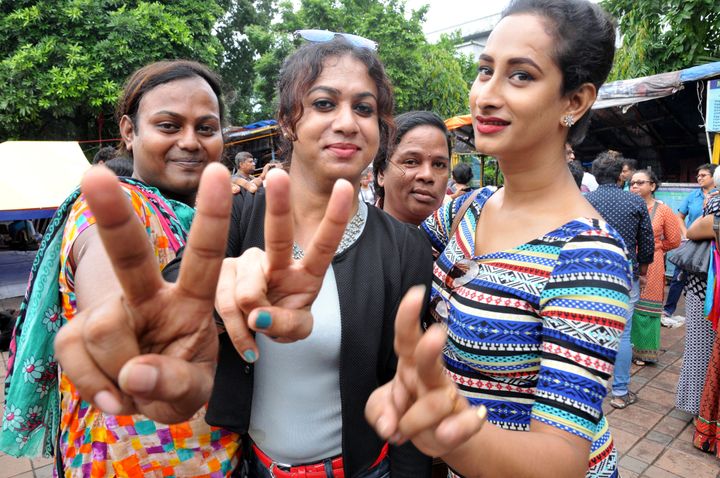
In 1533, Henry VIII, with the help of his chief minister Thomas Cromwell, passed England’s first civil law banning sodomy – the so-called “Buggery Act”. During the British Empire, a version of that provision found its way into the penal codes of over 40 countries across the Commonwealth, criminalising homosexuality across the globe.
On 6 September 2018, after over 150 years on the statute books, the Indian Supreme Court ruled unanimously that Section 377 of the Indian Penal Code was unconstitutional, decriminalising consensual sex between same-sex adults in India. In a definitive judgment, the previous ban on gay sex was ruled “irrational, arbitrary and incomprehensible”.
To say that this is a huge step forward for LGBT+ rights in India is an understatement. It is a vindication of years of activism from Indian campaigners who have tirelessly fought religious, social and cultural prejudices in a bid to overturn the colonial-era law.
Despite enormous social conservatism, India has a long history – in culture, religion and mythology – of a playful and open representation of queerness comprising gender variance, cross-dressing, homosexuality, androgyny and erotic sculpture.
The ancient Hindu text the Rigveda (some 3500 years old) pronounced “Vikruti Evam Prakriti”: that perversity is part of human nature. This is read by many scholars to be an acknowledgement that there is a certainty and consistency in the diversity of human sexuality and that homosexual and transsexual behaviours in humans which may seem “unnatural” are, by their very nature, natural, and part of the human story.
So much for ancient history. Thursday’s ruling is history in the making. LGBT+ Indians awake today knowing that whilst societal norms and prejudices may remain, the dial has been shifted forward in a significant way. The Indian state, by its constitution, now conclusively offers consenting adults the right to privacy, to intimacy and to the dignity of freely loving someone, irrespective of their gender or sexual orientation.
In her searing judgment, Supreme Court Judge Indu Malhotra noted that “history owes an apology” to the LGBT+ community for past discrimination. She noted:
“A person’s sexual orientation is intrinsic to their being. It is connected with their individuality, and identity. A classification which discriminates between persons based on their innate nature, would be violative of their fundamental rights, and cannot withstand the test of constitutional morality.”
“The members of this [LGBTQ+] community were compelled to live a life full of fear of reprisal and persecution. This was on account of the ignorance of the majority to recognise that homosexuality is a completely natural condition, part of a range of human sexuality.”
The practical effect of the force and eloquence of such a statement cannot be underestimated. Some kid in Kolkata, who feels a little bit “different”, will come across this news, and know that their feelings – their innate desire to express their nature and individuality – are fully and definitively endorsed and validated by the highest apparatus of the state.
The Indian Supreme Court’s ruling has made global headlines – and why shouldn’t it? India remains the world’s largest democracy. In these times of retrenched rights and populism across the world, any sign of social progress for minority rights should be celebrated globally. The fact that a secular, democratic country with an independent judiciary has made such a clear case for equality is something for which Indians today should be proud. Most of the rest of the Commonwealth – and indeed the British establishment – have some catching up to do to right similar historical wrongs.
The judgment is also a neat reminder that the LGBT+ struggle is global, and that queerness comes in all shades. LGBT+ British Indians and other queer people of colour have long faced discrimination from their own ethnic or religious communities. This is often compounded by the lack of diversity in a contemporary British gay culture and media dominated by gay white men. Sadly, yet inevitably, this has even led to a schism in the Pride movement, with London now celebrating a separate “UK Black Pride”. To a gay man who has suffered far more racism from fellow gay men than ever from any other British person, the need for a celebration of diversity within the LGBT+ community is self-evident. Nonetheless, I do long for the day when LGBT+ identity can be celebrated under a single banner (rainbow or otherwise). The point of Pride is to allow a queer community to rid itself of society’s shame. That shame knows no one colour, no one religion and no one community. Neither should the battle to overcome it.
I know only too well the challenges of overcoming shame and coming out to an Indian family. In a society where family is everything and marriage and children are key markers of success, same-sex relationships often mean stigma, shame, scandal and dishonour. Fortunately, times are changing and a string of household names in India – film directors, writers, designers and princes – are living out and proud lives. Although they represent India’s elite, it is a matter of time before contemporary gay culture in India seeps into the consciousness of the wider population to foster wider acceptance. Fortunately too, the major political parties are coming out as largely supportive of the Supreme Court judgment.
While they may still complain and protest, for once, India’s religious conservatives cannot blame “the West” for this perceived immorality and for the attendant culture wars. Perversely, Ancient India (with its acknowledgement of same-sex marriage and semen-swallowing gods) celebrated queerness long before the British Empire criminalised it.
Seems like perversity is a wholly natural part of the human story after all.
